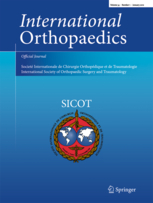
TRAUMA
No difference between distal locked and unlocked nailing for pertrochanteric fractures
Int Orthop. 2015 Aug;39(8):1645-52. doi: 10.1007/s00264-015-2771-1. Epub 2015 Apr 26.70 patients with pertrochanteric fractures underwent intramedullary nailing either with or without distal locking screws. The patient follow-up period was one year where the Harris hip score, fracture union time, femur shortening, recovery of walking ability to pre-injury status (incidence), percentage of patients who required a walking aid, percentage of patients who required a wheelchair, and mortality (percentage) were assessed. There were no significant differences between the treatment and control groups for any of the clinical or radiographic outcomes measured. However, perioperative outcomes, such as operative time, fluoroscopy time, incision length, and blood loss, demonstrated significant advantages in the group without distal locking compared to the group with distal locking screws.
Unlock the full ACE Report
You have access to {0} free articles per month.Click below to unlock and view this {1}
Unlock NowCritical appraisals of the latest, high-impact randomized controlled trials and systematic reviews in orthopaedics
Access to OrthoEvidence podcast content, including collaborations with the Journal of Bone and Joint Surgery, interviews with internationally recognized surgeons, and roundtable discussions on orthopaedic news and topics
Subscription to The Pulse, a twice-weekly evidence-based newsletter designed to help you make better clinical decisions
Exclusive access to original content articles, including in-house systematic reviews, and articles on health research methods and hot orthopaedic topics
Or upgrade today and gain access to all OrthoEvidence content for just $1.99 per week.
Already have an account? Log in


Subscribe to "The Pulse"
Evidence-Based Orthopaedics direct to your inbox.
{0} of {1} free articles
Become an OrthoEvidence Premium Member. Expand your perspective with high-quality evidence.
Upgrade Now












































































